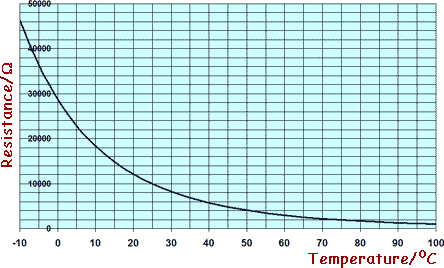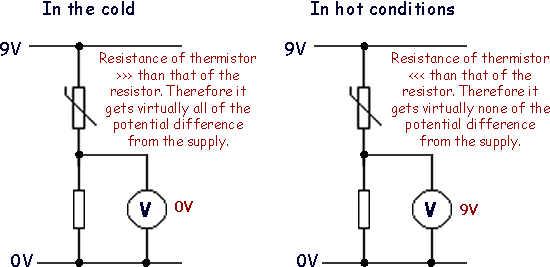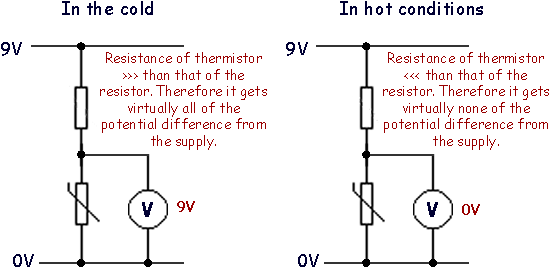Thermistor
Increasing the temperature frees more electrons to carry the current and so the resistance falls. At low temperatures the resistance of the thermistor is very large (thousands of ohms), at high temperatures its resistance is small (tens of ohms). Therefore very little current will flow through it when it is cold. This means that its resistance increases as the temperature falls. Thermistors can be used as temperature sensors. They can be used to control the output of a circuit depending on the temperature - to automatically switch on a heater when it gets cold, or set off an alarm if a room gets hot. Very little current will flow through the thermistor when the circuit is cold. It therefore can be made to work like a switch in a circuit. The 'switch' is closed in high temperatures and open in the cold. Consider the potential divider circuits below. Make sure you can interpret such diagrams and understand how the physical conditions (how hot it is) affect the sensor's resistance and hence the share of the voltage it gets.
|
Follow me...
|


 A thermistor
A thermistor 





